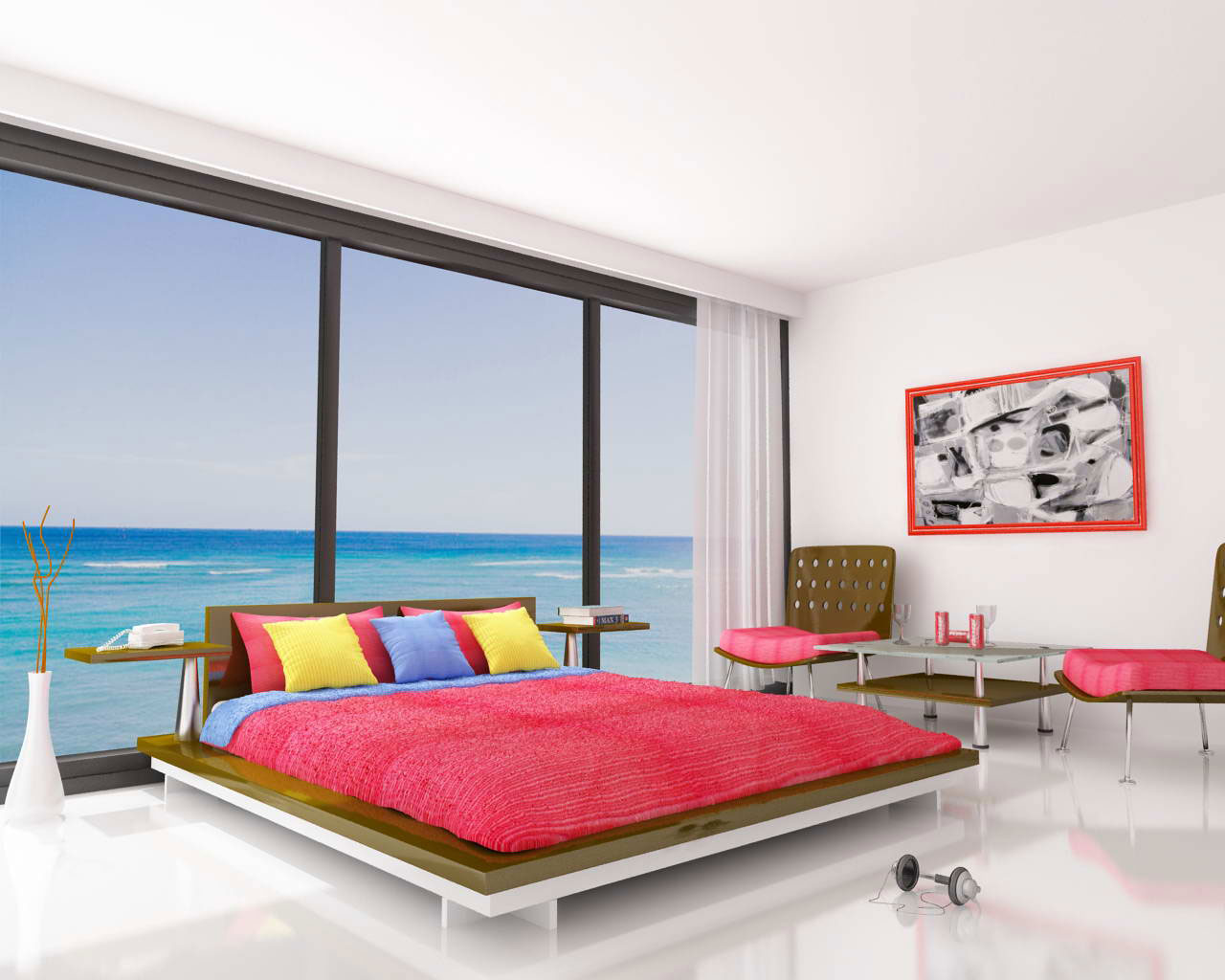Decorating with Minimalism

Simple room decoration – Minimalism is an interior design style that emphasizes simplicity and functionality. By stripping away excess and focusing on the essentials, minimalism creates a sense of space and tranquility. Achieving a minimalist aesthetic in your home is relatively straightforward and can be accomplished with a few simple steps.
With a few clever tricks, simple room decoration can transform even the tiniest spaces into inviting havens. For those seeking inspiration for small abodes, explore simple interior design for small house. This comprehensive guide offers practical tips and ideas to maximize space, create a cohesive flow, and achieve a stylish yet comfortable living environment.
Choosing Furniture
Furniture in a minimalist space should be simple, functional, and visually appealing. Look for pieces with clean lines, neutral colors, and natural materials such as wood, leather, or metal. Avoid overly ornate or bulky furniture, as it can create a cluttered look.
In the realm of interior design, simplicity often reigns supreme. A well-curated space, devoid of clutter and adorned with essential furnishings, exudes an air of tranquility and sophistication. Similarly, in the culinary world, a restaurant’s interior design plays a pivotal role in enhancing the dining experience.
Best restaurant interior design seamlessly blends aesthetics and functionality, creating an ambiance that tantalizes the senses and complements the culinary creations. Just as a simple room decoration can transform a living space, an inspired restaurant interior design can elevate a meal into an unforgettable occasion.
Selecting Colors
A minimalist color palette is typically limited to a few neutral shades, such as white, black, gray, or beige. These colors create a sense of calm and serenity and can be easily combined with other elements in the room. Avoid using too many bright or contrasting colors, as they can be distracting and overwhelming.
Accessorizing
Accessories in a minimalist space should be used sparingly and with intention. Choose pieces that are both functional and aesthetically pleasing, such as a vase, a candle, or a piece of artwork. Avoid cluttering the room with unnecessary items, as this can detract from the minimalist aesthetic.
Incorporating Natural Elements: Simple Room Decoration
/GettyImages-9261821821-5c69c1b7c9e77c0001675a49.jpg)
Incorporating natural elements into your home decor can create a warm and inviting atmosphere. Natural materials such as wood, stone, and plants can bring the outdoors in, creating a sense of peace and tranquility.
Here are some tips for incorporating natural elements into your home decor:
Wood
- Use wood furniture and accents to add warmth and texture to your space.
- Choose wood pieces with natural finishes to highlight the beauty of the grain.
- Incorporate wood into your walls, floors, or ceilings to create a rustic or organic look.
Stone, Simple room decoration
- Use stone tiles or slabs for your floors, countertops, or backsplashes.
- Choose stone with natural variations in color and texture to add interest to your space.
- Incorporate stone into your fireplace surround or hearth to create a cozy and inviting atmosphere.
Plants
- Add plants to your home to bring the outdoors in and purify the air.
- Choose plants that are easy to care for and that will thrive in your home’s environment.
- Group plants together to create a focal point or use them to add a touch of greenery to any room.
Creating a Focal Point
:max_bytes(150000):strip_icc()/13-Decor-ist-living-room-makeover-the-spruce-58bdd1f13df78c353cc35478.jpg)
In the realm of interior design, the creation of a focal point is paramount, acting as a magnet that draws the eye and anchors the entire space. It serves as the visual centerpiece, commanding attention and lending a sense of purpose to the room. By establishing a clear focal point, you can create a dynamic and visually engaging environment.
There are myriad ways to establish a focal point in a room. A statement piece of furniture, such as an opulent sofa or an intricately carved armchair, can instantly command attention. Bold artwork, whether it be a vibrant painting or a captivating sculpture, can transform a wall into a mesmerizing display. A dramatic light fixture, whether a cascading chandelier or a sleek pendant lamp, can cast a captivating glow, illuminating the space and drawing the eye upward.
Balancing the Focal Point
While creating a focal point is essential, it is equally important to ensure it does not overwhelm the rest of the room’s decor. The key lies in striking a harmonious balance, allowing the focal point to take center stage without eclipsing the other elements. One effective technique is to choose a focal point that complements the overall color scheme and style of the room, creating a cohesive and inviting atmosphere.
Additionally, consider the size and scale of the focal point in relation to the room’s dimensions. A large statement piece in a small room can feel overpowering, while a diminutive focal point in a spacious room may get lost. By carefully considering the proportions, you can create a focal point that enhances the room’s ambiance without overpowering it.
